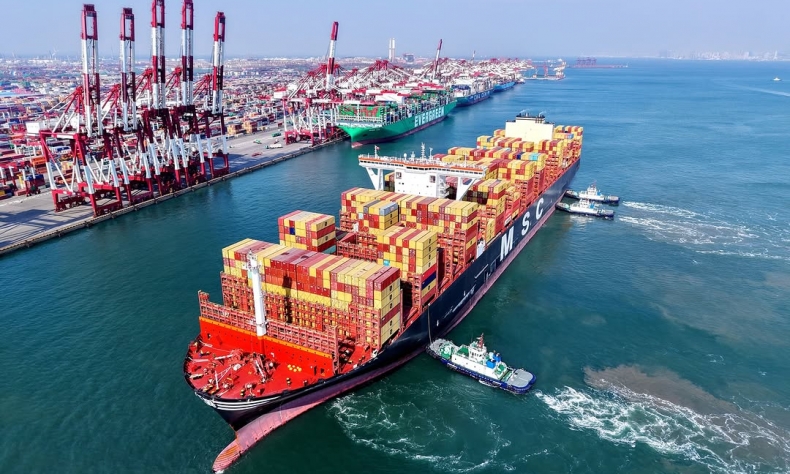Economic Shock & Awe: Trump’s Tariff Blitz

Faced with the certainty of the end of the dream of a world to call ‘its own,’ the U.S. wants to take revenge on everyone in order to leave as many ruins as possible in the world for the new power in multilateralism—China.
The protectionist policy of the United States became the country’s flagship approach during Donald Trump’s first term and continued with the Joe Biden administration. President Trump’s second term now aims to deepen tariff barriers in a widespread manner in a bid to topple the global economy in hopes that only the U.S. will remain standing.
The U.S. trade war could even be against the entire world if need be. Countries are seen as ungrateful allies that need to be punished; irrelevant, and hence should pay the price of their irrelevance. Or they are considered threatening adversaries that need to be economically subdued before it’s too late for the U.S. The latter seems to be the case with China.
Trump doubled down by imposing 104-percent tariffs on Chinese products, coming into effect on April 9, in the face of the legitimate decision by the Chinese Government to establish a reciprocal 34-percent tariff on American products. Trump not only wants to “force” China to negotiate, but he wants to provoke a certain humiliation. He didn’t succeed and is unlikely to succeed.
In early 2018, Trump first began a tariff war against China. However, in trying to curb China’s economic advances and force an artificial “decoupling” between the two largest economies in the world, which are in fact deeply integrated, the U.S. not only increased costs for its own consumers and companies but also accelerated the strengthening of the Chinese production chain.
China went on to achieve a record surplus of $1 trillion in its trade with the world in 2024 and has thus far become the largest trading partner of almost 150 countries and regions. Therefore, instead of weakening China, the tariffs encouraged the country to invest in technological self-sufficiency and market diversification.
U.S. foreign policy has become a policy aiming at destroying everything the Chinese build. But they make a crucial mistake: China is not building alone, but works with numerous countries. A direct attack on China is an indirect attack on the economies of many a developing country. However, China has been a bulwark against the damage from Trump’s rotary tariff machine gun.
Trump is isolating the U.S. from the up-and-coming Asian dynamism, running the risk of losing global competitiveness and weakening its capacity to influence in multilateral forums by becoming an unreliable country for the maintenance of the post-World War II international order.
After all, it is clear that the U.S. wants to remake the current international order. Or, in a more realistic scenario, it wants to maintain the order that favored it post-World War II, but only limited to its more restricted circle of influence, not the entire world. Yet this is an outdated order based on threats as well as the moods and desires of its presidents.
Faced with the certainty of the end of the dream of a world to call “its own,” the U.S. wants to take revenge on everyone in order to leave as many ruins as possible in the world for the new power in multilateralism—China.
The author is a professor of international law at FGV Law School in Rio de Janeiro, and the Faculty of Law at Fluminense Federal University, Brazil.
 Facebook
Facebook
 Twitter
Twitter
 Linkedin
Linkedin
 Google +
Google +










